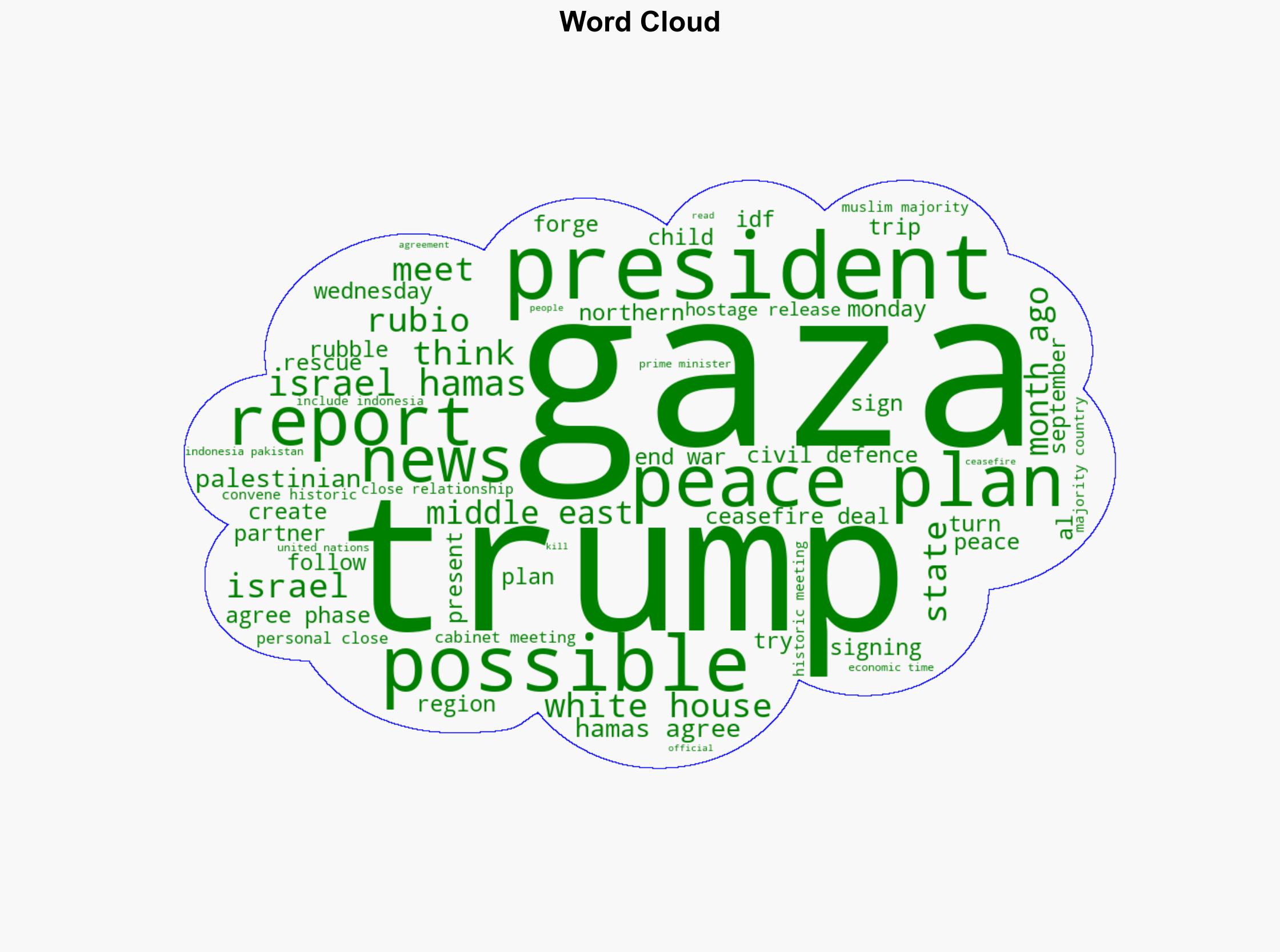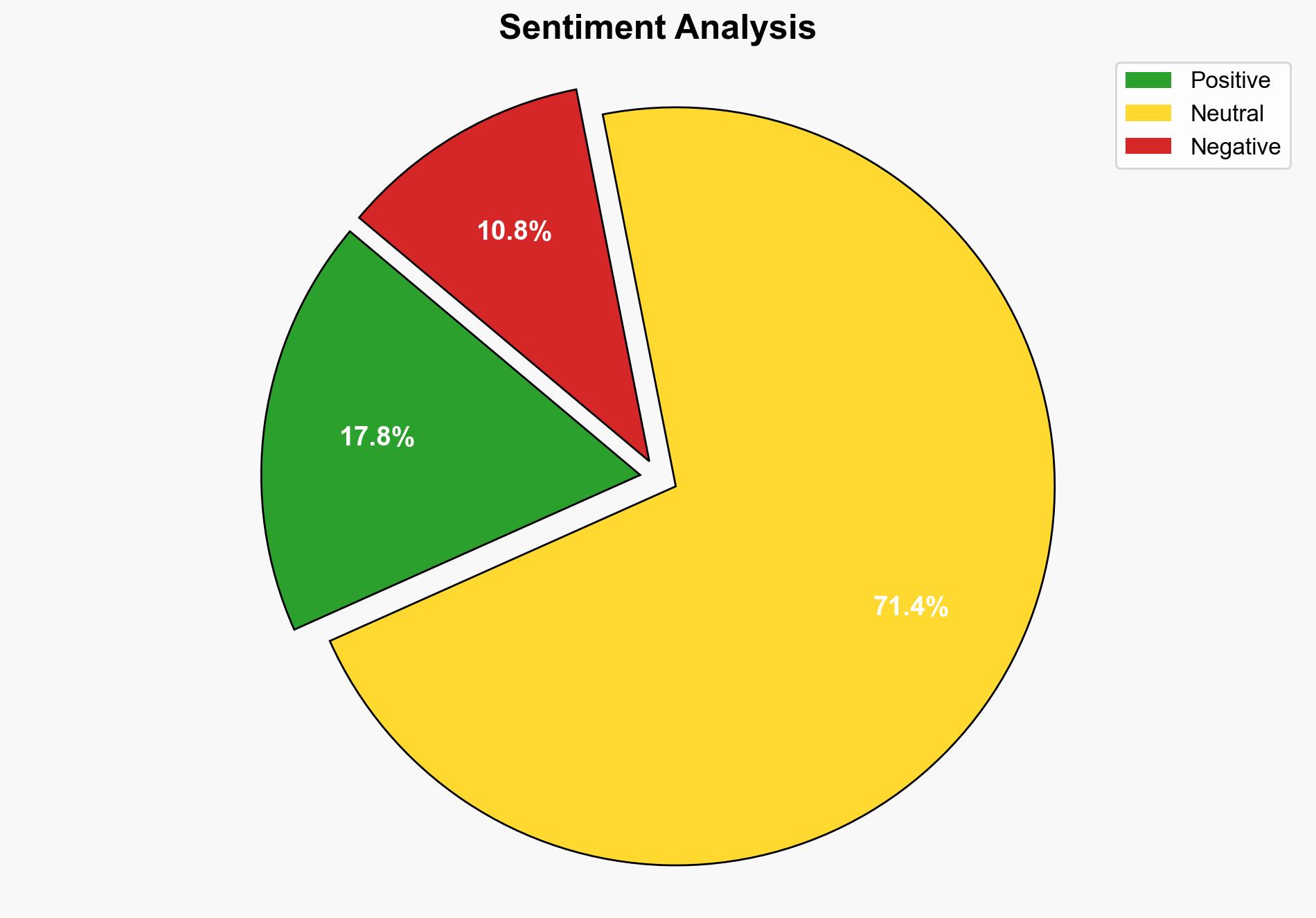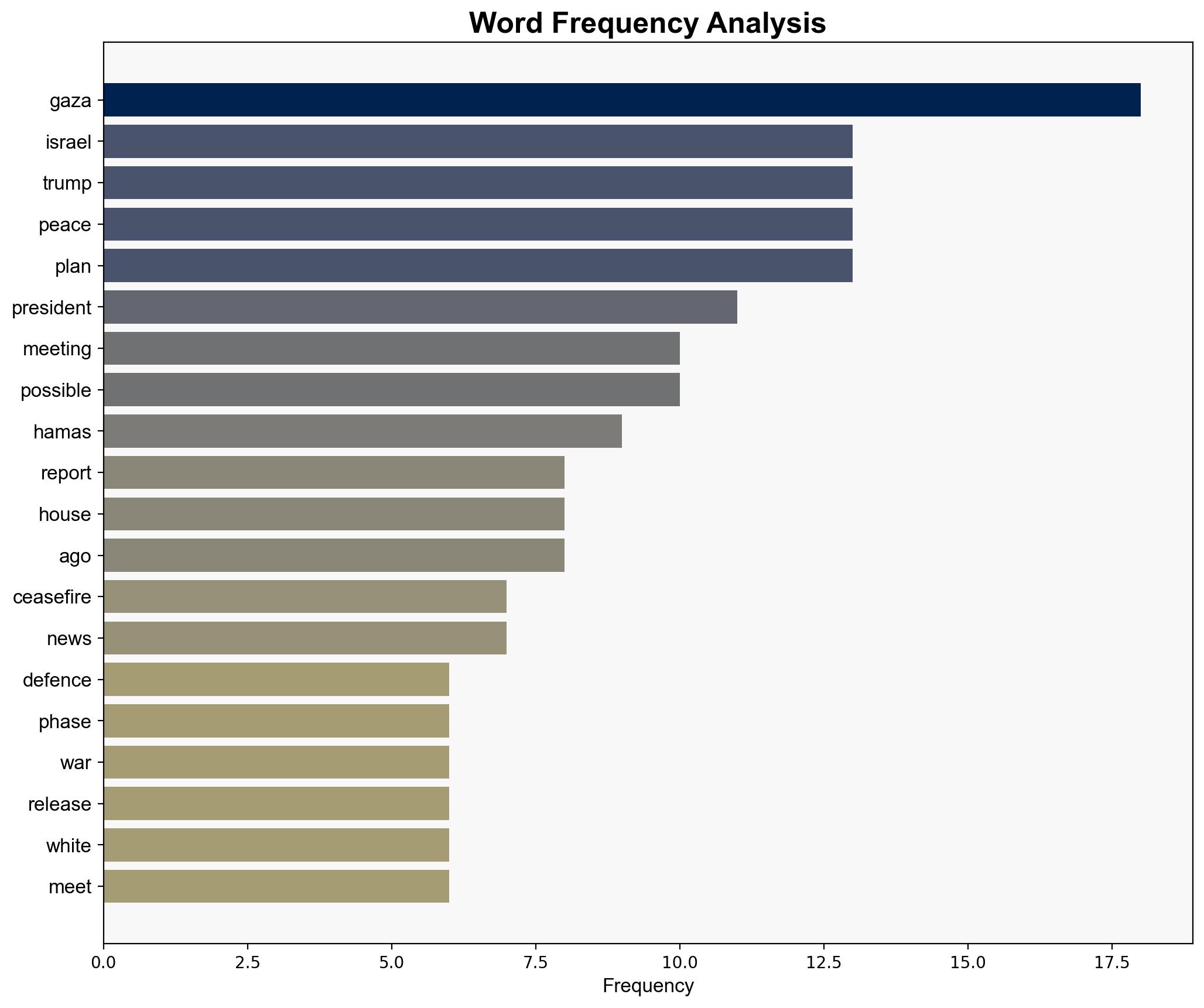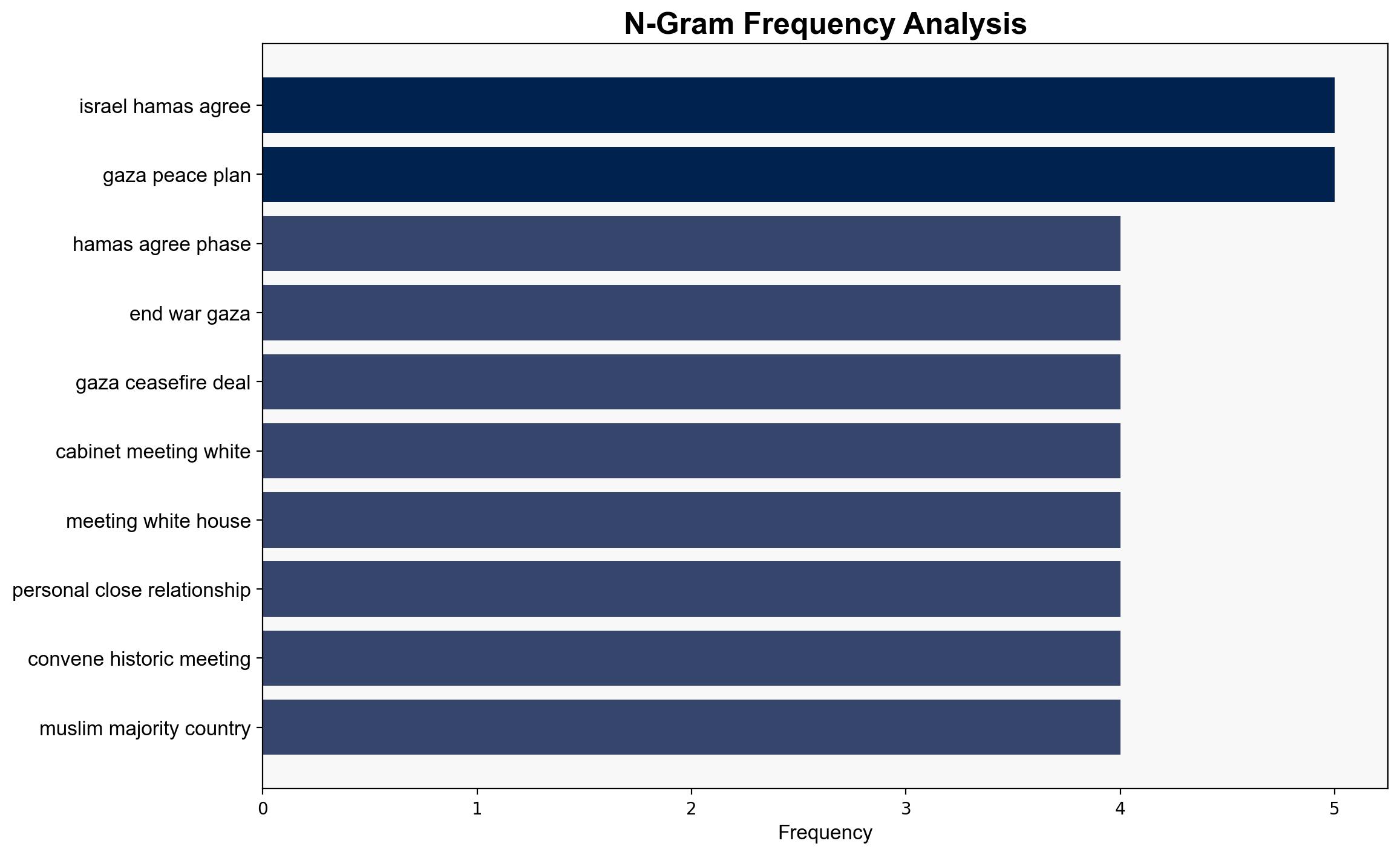Israeli strike kills 30 Palestinians in Gaza since ceasefire deal announcement – The Times of India
Published on: 2025-10-10
Intelligence Report: Israeli strike kills 30 Palestinians in Gaza since ceasefire deal announcement – The Times of India
1. BLUF (Bottom Line Up Front)
The situation in Gaza remains volatile despite the announcement of a ceasefire deal. The most supported hypothesis is that the Israeli strike was a preemptive action against a perceived imminent threat from Hamas, rather than a violation of the ceasefire. Confidence in this assessment is moderate due to conflicting reports and the lack of independent verification. Recommended action includes diplomatic engagement to clarify the terms of the ceasefire and prevent further escalation.
2. Competing Hypotheses
1. **Hypothesis A**: The Israeli strike was a targeted action against a specific Hamas threat, conducted in response to intelligence indicating an imminent attack, and not a breach of the ceasefire agreement.
2. **Hypothesis B**: The Israeli strike represents a breach of the ceasefire agreement, possibly due to miscommunication or differing interpretations of the agreement’s terms.
Using the Analysis of Competing Hypotheses (ACH) method, Hypothesis A is better supported by the available intelligence, particularly the Israeli Defense Force’s (IDF) statement about targeting a Hamas terrorist cell. However, the lack of independent verification and civilian casualties complicate this assessment.
3. Key Assumptions and Red Flags
– **Assumptions**: It is assumed that the IDF’s intelligence on the Hamas threat was accurate and that the strike was a direct response to this intelligence.
– **Red Flags**: The absence of independent verification of the IDF’s claims and the high civilian casualty rate raise questions about the proportionality and necessity of the strike.
– **Blind Spots**: Potential miscommunication between involved parties regarding the ceasefire terms and the timing of the strike.
4. Implications and Strategic Risks
The strike risks undermining the ceasefire and could lead to renewed hostilities if perceived as a breach. It may also affect regional stability and international perceptions of the peace process. The humanitarian impact and potential for increased radicalization in Gaza are significant concerns.
5. Recommendations and Outlook
- Engage in diplomatic dialogue with both Israeli and Palestinian authorities to clarify ceasefire terms and prevent further incidents.
- Monitor the situation closely for signs of escalation or retaliation from Hamas.
- Scenario Projections:
- **Best Case**: Ceasefire holds, and diplomatic efforts lead to a sustained peace process.
- **Worst Case**: Full-scale conflict resumes, leading to significant casualties and regional instability.
- **Most Likely**: Sporadic violence continues, but major escalation is avoided through international mediation.
6. Key Individuals and Entities
– Mohammed Abu Salmiya
– Donald Trump
– Marco Rubio
– Benjamin Netanyahu
7. Thematic Tags
national security threats, counter-terrorism, regional focus, Middle East peace process




